Why should the rotor of a 3-phase induction motor not rotate at synchronous speed?
4 Answers
The magnetic field of the stator, rotating faster than the physical speed of the rotor passes through the rotor conductors. That induces current in the rotor. Current in the rotor generates a magnetic field in the rotor that rotates at the same speed as the stator magnetic field, but lagging in position. That creates rotor torque. At synchronous speed, the rotor would be turning at the same speed as the rotor magnetic field and no torque would be produced. With no load attached to the motor shaft, very little torque is required to keep the rotor moving, so the speed is nearly synchronous. Any increase in load reduces the rotor speed and increases the rotor current and torque.
It certainly can rotate at synchronous speed, or even faster.
But electric power is communicated to the rotor by induction. Effectively, the rotor is the secondary winding of a transformer, which is driven by a frequency equal to the slip speed. So, at synchronous speed, that frequency is zero, and no power is communicated to the rotor.
So, to rotate at synch speed, you must be mechanically driving the rotor with enough power to overcome frictional losses - this happens in a Tesla car rolling downhill, for example.
Drive the rotor faster than synchronous speed, and it can return power to the electrical system. Induction between rotor and stator now extracts electrical power from the rotor, acting as a brake on whatever is mechanically driving it via the shaft.
But then it isn't a motor, it's a generator.
If the rotor is spun at synchronous speed there would be zero induction and hence zero torque produced. What you see is slip and that slip creates enough induction which leads to enough torque to overcome residual friction and losses when no proper mechanical load is connected.
Just in case you didn’t understand the zero induction idea; if the rotor windings are rotating at the same pace as the rotating magnetic field, the rotor perceives no net change to the magnetic field hence, due to Faraday’s law of induction, no induction takes place.
- 434,556
- 28
- 351
- 777
You need to take a close look at the rotor. In particular, search it for any evidence of magnetism. You won't find any.
To run synchronously, the rotor would need to have a definite north-south magnetism. That magnet would need to be strong enough to keep the motor in sync despite the drag of the load. That could be done with permanent magnets, or with a wound rotor powered via slip rings.
What you actually have is a "squirrel cage". It could be a plain copper or aluminum pipe, but it works better if it's slotted down the pipe, looking like a ...squirrel cage. Even better still if ferrous laminations are added to its center. There are no electrical connections to the rotor.
The motor's stator creates a whirling magnetic field spinning at 3000/3600 RPM, or 1500/1800 RPM. The "swishing of this virtual magnet" across the squirrel cage induces currents into the cage. That current creates a magnetic field, and the attraction/repulsion of that magnetic field sets the rotor into motion.
What the squirrel cage rotor can do, that the synchronous motor cannot, is recover when the load drags it off-frequency. The more off-frequency it is, the more it inducts and the more power it develops: Anyone who's worked at a wood shop knows the BEEE-OOOO-EEE sound of a table saw being loaded up during a cut.
In theory, it's weird. But in practical use, it's darned elegant. Thank you, Mr. Tesla!
- 21,639
- 27
- 68
-
Actually, I heard from the Skeptics society that somebody else invented this about 2 years before Tesla, but Tesla was the first to patent it in the U.S. – richard1941 Jun 05 '18 at 01:01
